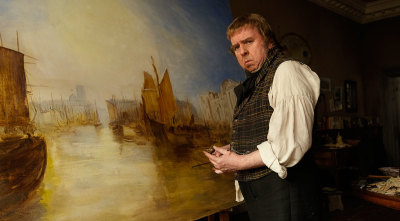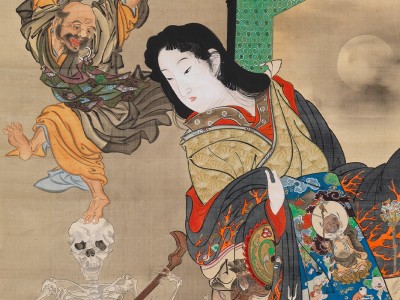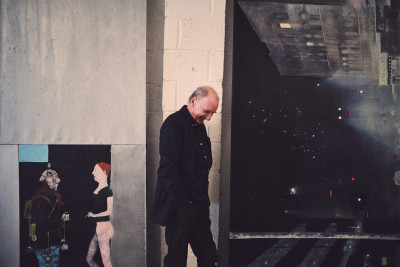Pangaea: New Art from Africa and Latin America
Pangaea: New Art from Africa and Latin America
By Emilie Shane
Published 22 April 2014
The Saatchi Gallery’s latest exhibition brings together the work of 16 contemporary South American and African artists, connecting the two continents by reminding us of the supercontinent they once comprised over 200 million years ago, before continental drift: Pangaea.
-
The exhibition starts with Columbian artist Rafael Gómezbarros’ giant ants climbing all around the walls. On closer inspection the bodies of the insects are casts of human skulls, representing asylum seekers the world over, but also paying tribute to thousands of Columbians who have died as a result of armed conflict in the country.
-

Rafael Gómezbarros, Casa Tomada, 2013.
Resin, Fiber Glass, Madera, Screen Cotton, Cuerda Arenas, Cerrejón Coal. Body: 50 x 20 x 50. Legs: 90 x 50 cm.
-
Antonio Malta Campos’ large, semi-abstract works take up the better part of three walls in one of the larger galleries. Each painting is comprised of two adjoined canvases that show Cubist-style heads; the two canvases can be thought of as separate, but the background shapes across both allow them to become one. Sharing the same gallery space as these portraits is a sculptural piece made of glass panels by Jose Carlos Martinat. Although these two artists make for a harmonious pairing because of their similarly colourful aesthetics, the contexts in which they create their works are very different: Campos’ work comes to fruition within the confines of his studio, while Martinat’s graffiti window panes are readymade objects from around Mexico City.
-

Antonio Malta Campos, Figures in Red, 2004.
Oil on canvas. 230 x 360 cm. © Antonio Malta Campos, 2004. Image courtesy of the Saatchi Gallery, London.
-
A sequence of bizarre pairings continues throughout the exhibition. For example, Leonce Raphael Agbodjélou’s photographic series – in beautiful homage to Picasso’s Les Demoiselles d’Avignon – shares gallery space with Boris Nzebo’s paintings of hairstyles merging with the architecture of the city Douala. The only significant common feature of the two artists’ work appears to be their triptych arrangement.
-

Leonce Raphael Agbodjélou, Untitled triptych (Demoiselles de Porto-Novo series), 2012.
180 x 130 cm each.
C-print.
-

Boris Nzebo, HLM (Habitats à Loyer Modérés), 2013.
Triptych.
Acrylic on canvas. Each: 230 x 200 cm.
-
Though the Saatchi Gallery has made an effort to project the exhibition as part of a global shift towards the exploration of cultures outside of Europe and the US, stylistically we are faced with the huge influence from European and North American art movements. The work of Brazilian artist Christian Rosa, for example, is inspired by Wassily Kandinsky’s colour philosophy, and borrows the Surrealist technique of automatic drawing. What is interesting, however, is how the featured artists combine these influences with those from their own cultures. Vincent Michea transforms album covers and photo scenes from the golden days of Dakar into postcard-ideal paintings, tinged with nostalgia in the style of Roy Lichtenstein.
-

Christian Rosa, Oh Fuck, 2013.
Pencil, oil stick, spray paint and oil on canvas. 180 x 200 cm.
-
While the works are tenuously unified by some common themes, including immigration, globalisation and nostalgia for cities’ pasts, their overall diversity poses challenges. Few of the works are solely defined by their location, making difficult any parallels between the art of Latin America and that of Africa. After leaving the exhibition you are not left with a clear sense of either Latin American or African cultural identity. But in introducing us well to the work of new artists, Pangaea succeeds.
Pangaea: New Art from Africa and Latin America is at the Saatchi Gallery until 31 August 2014.
Emilie Shane is a contributor to RA Magazine.








